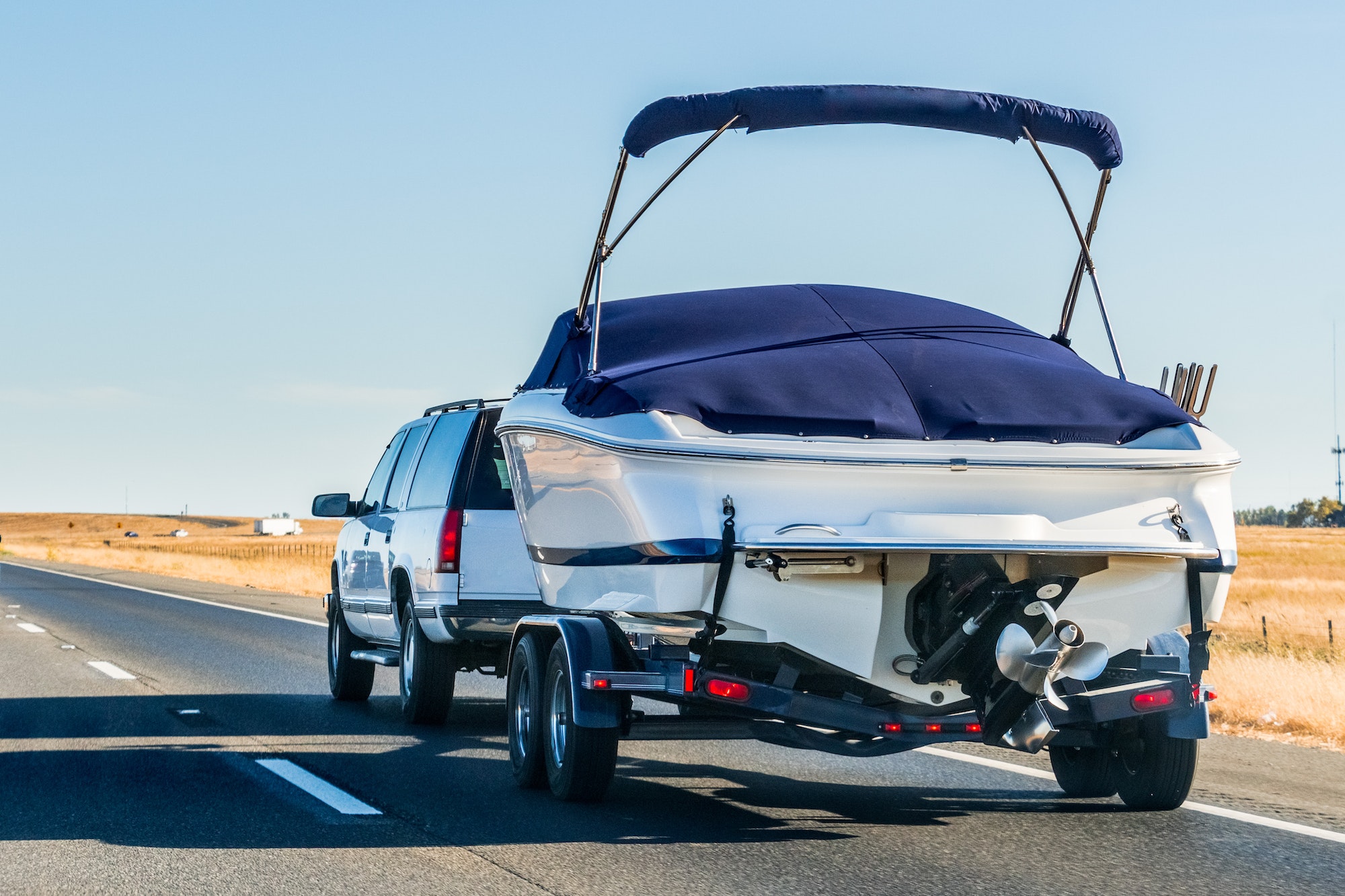Are you looking to transport your lake boat? Whether you’re moving to a new lake or simply want to take your boat on vacation, there are a few things you need to know about shipping your boat.
This guide covers everything from finding the right shipper to preparing your boat for transport. When you’re finished reading, you’ll know exactly how to get your lake boat from point A to point B.
How do I prepare my boat for transport?
Take Photos: Before starting to dismantle anything on your boat, take photos to reference when you reassemble to ensure there were no damages.
Clean and Secure: It is also recommended to clean your boat’s exterior and secure any loose gear stored above and below the deck.
Close and Lock: Close and lock your boat hatches, close all cabin windows and drain all water tanks.
Disconnect: Disconnect all batteries and secure all cables.
Empty Tanks: Drain fuel and water tanks.
Winterize: If your shipment is during the winter, prepare the boat by winterizing.
Demount Structures: All antennas, flag staffs, masts, etc., should be demounted and stored in the boat. Any structure on the boat that extends above the top of the main boat, including any accessories, flying bridges, etc., should be removed.
What are the different ways of transporting boats?
You can transport your boat in various ways. Here we have listed some of the best and most frequently used options:
Towing
Towing is the process of pulling a boat or other vehicle behind a tow vehicle, such as a car, truck, or SUV. It is commonly used to transport boats from one location to another. It is different from simply transporting a boat in that it requires the use of a tow vehicle, trailer, and other equipment to safely move the boat from one place to another.
Towing requires attention to detail, such as selecting the proper tow vehicle, trailer, and other equipment, so the boat is securely and safely transported. It is also essential to consider factors such as weight distribution, proper loading and unloading of the boat and trailer, and understanding the local laws and regulations for towing a boat.
Steps to transport a boat with a trailer:
1. Determine the type of trailer needed for the boat.
2. Choose a tow vehicle that is compatible with the trailer and can safely transport the boat and trailer.
3. Inspect the trailer and boat to ensure they are in good condition and ready for transport.
4. Load the boat onto the trailer, following all safety precautions.
5. Secure the boat to the trailer using straps or other appropriate methods.
6. Attach the trailer to the tow vehicle.
7. Check all lights and signals on the trailer and tow vehicle to ensure they are working correctly.
8. Drive safely to the destination, following all applicable traffic laws.
9. Unload the boat from the trailer following all safety precautions.

Air transport
The process of air transporting boats depends on the size and type of boat. Smaller boats can be transported by air using large cargo planes, while larger boats may need to be transported using military cargo planes or air barges. Here is a step-by-step guide to air transporting a boat:
Choose the right aircraft for the job – Depending on the size and type of boat; you may need to use a large cargo plane, military cargo plane, or air barge.
Prepare the boat for transport: This includes draining all fluids, removing any electronics and other items, and wrapping the boat in appropriate materials.
Secure the boat to the aircraft: The aircraft may require special rigging to help secure the boat.
Load the boat onto the aircraft: The boat may need to be loaded using a crane.
Transport the boat: Once the boat is secured to the aircraft, it will be transported to its destination.
Unload the boat: Once the boat reaches its destination, it will need to be unloaded from the aircraft using a crane.
Reassemble the boat: The boat will need to be reassembled, including installing electronics and other items that were removed before transport.

Professional Transport
Professional transport is a service that provides all the necessary tools and resources to safely transport boats from one location to another. It offers door-to-door transport, 24/7 customer service, free cancellations, contingency insurance, and dedicated logistics specialists. Additionally, it can provide trucking and transportation, oversize load transportation, permit acquiring, route surveys, and pilot cars and escorts.
This type of transport differs from other ways of transporting boats in that it is highly specialized, providing comprehensive and professional services to ensure the safety and security of the boat. It also provides various additional services, such as oversize load insurance, shipping quotes, and tracking services.
How do I choose a boat transport company?
Choosing a boat transport company can be a daunting task. Here are some step-by-step instructions to help you make an informed decision when selecting the right boat transporter.
Research and compare boat transport companies: Start your search by researching different boat transport companies. Make sure to look at their reviews, experience, and prices to find the best fit for you.
Get a boat shipping quote: Once you have found a company you are interested in, reach out to them for a boat shipping quote. Make sure to provide accurate information regarding your boat’s weight, height, width, and mileage.
Create a shipment listing: Create a listing of your shipping needs and budget on a platform such as uShip. Include accurate dimensions of your boat and any other details that may be important.
Compare boat transport carriers: Look through carrier profiles to see the kinds of experiences previous customers have had. Consider the transporter’s transport history, safety records, and customer-rated feedback.
Contact the transporter: Once you’ve chosen a transporter, get in touch with them to discuss any additional details, questions, or concerns. Set up a good meeting place for pick up and delivery and share contact information for any third parties or marinas involved.
Choosing the right boat transport company can be complicated, but if you follow these steps, you can make an informed decision that you are sure to be happy with.

Tips for safely transporting your boat
When transporting a boat, it is essential to take a few steps to prepare for a successful shipment. Before dismantling anything, make sure to take photos for reference when reassembling. Additionally, remove all personal items from your boat and clean the exterior.
Secure any loose items above and below the deck and close, secure, and seal any hatches. When preparing your boat, be sure to latch and tape cabin windows from the outside, drain fuel and water tanks, remove any drain plugs from the hull, disconnect and secure the cables away from the battery, and measure the boat to ensure it’s within the legal loaded height.
Additionally, it’s recommended to have it inspected by a licensed marine surveyor and pick a loading spot that has a 14’ clearance. When shipping your boat, be sure to drain the fuel tank, disconnect all electronics, securely stow all loose items, remove any valuables and hazardous materials, and take pictures of the interior and exterior of the vessel. If you are shipping your boat during the winter, make sure to winterize it. Following these steps will help ensure successful boat transport.

FAQ
What is the best way to transport my boat?
The best way to transport a boat depends on size, destination, and budget. Generally, the most cost-effective transport method is to use a single vehicle to tow the boat. However, if you are going over land, you may need to consider other options if the route is difficult or inaccessible.
What size trailer will I need for my boat?
The size of the trailer you’ll need for your boat depends on the length and width of your boat, as well as the weight. You’ll also need to consider the type of terrain you’ll be traveling on and the type of boat you have. You can usually transport it on a smaller trailer if you have a small boat, such as a kayak or canoe. Larger boats will require a larger trailer.
What is the cost of boat transport?
When it comes to transporting a boat, the cost can vary greatly depending on the size and distance of the journey. The average cost for boat transport is around $600 to $1,000 for longer hauls and $150 to $350 for shorter distances. If the width of your boat is over 12 feet, you can expect to pay between $2.75 to $3.75 per mile. The smaller your boat is, the less you will have to shell out for a mile. The average cost per mile for boat transport is usually around $1.63.
How do I secure my boat onto the trailer?
There are a few different ways to secure your boat onto the trailer. The most important thing is ensuring the boat is stable and will not move around during transport. You can use straps, chains, or ropes to secure the boat.
What are the safety precautions for transporting a boat?
When transporting a boat, it is essential to take safety precautions to ensure that the vessel arrives at its destination safely. Some of the things to consider when planning a boat transport include:
– Hiring a professional shipping company that has experience transporting boats
– Making sure the boat is properly insured for transport
– ensuring that the boat is securely tied down and/or cradled during transport
– Planning the route of transport to avoid low bridges or other obstacles
What types of trailers are available for my boat?
Many different types of trailers are available for boats, depending on the size and type of boat. Some trailers are designed for specific types of boats, such as sailboats or jet skis. For smaller boats, there may be utility trailers or pontoon trailers available. Larger boats may require a trailer with multiple axles. When choosing a trailer, be sure to consult your owner’s manual or a professional to ensure you are selecting the best option for your boat.
What are the risks associated with transporting a boat?
Transporting a boat can be daunting, requiring special attention and preparation to ensure a successful shipment. Several risks are associated with transporting a boat, including the possibility of damage due to weather or road conditions, theft or vandalism, and the liability for any damage resulting from inadequate securing of the boat.
To minimize these risks, taking the necessary precautions regarding fuel tank drainage, disconnecting and securing electronics and valuables, removal of hazardous materials, and winterization (if shipping during winter) is essential.
Are there any regulations for transporting a boat?
There are definitely regulations for transporting a boat! Any time you move a boat from one body of water to another, you must register it in the new state. Some states have additional requirements, like an invasive species decal or proof of insurance. And if you’re going to be hauling the boat on a trailer, you’ll need to make sure your vehicle is up to the task.

